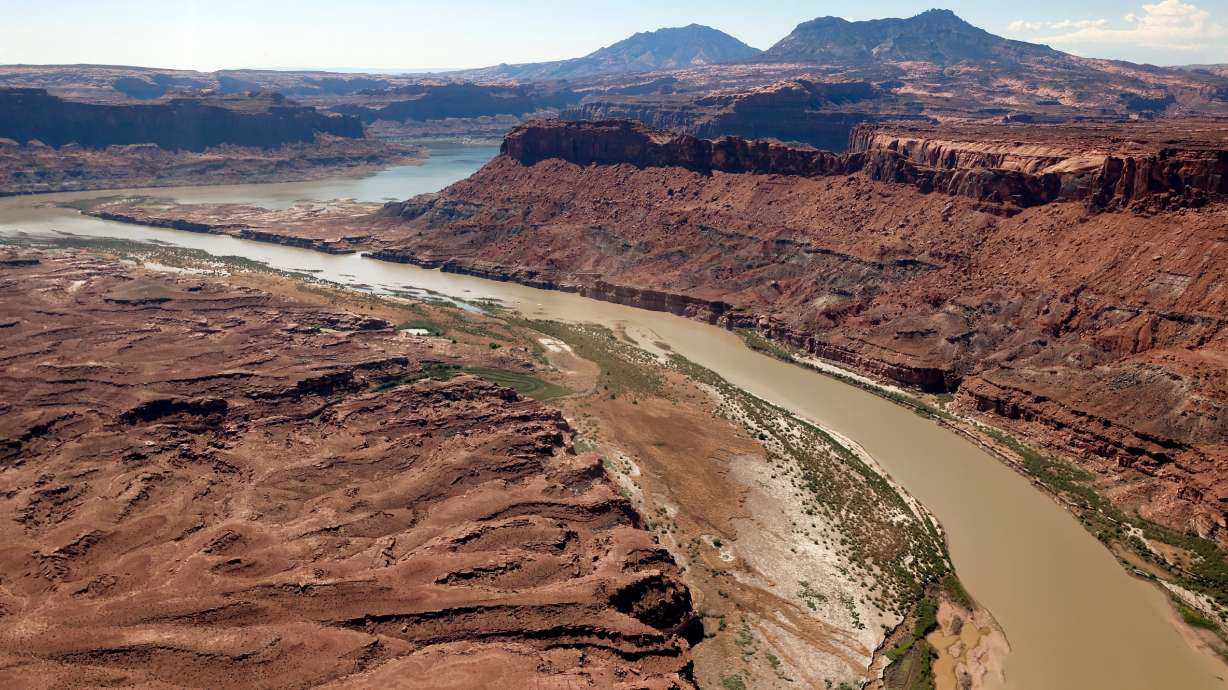Estimated read time: 5-6 minutes
This archived news story is available only for your personal, non-commercial use. Information in the story may be outdated or superseded by additional information. Reading or replaying the story in its archived form does not constitute a republication of the story.
- The Bureau of Reclamation proposed five alternatives for post-2026 Colorado River management.
- Options include federal authority plans, cooperative conservation, and basin hybrid strategies.
- Public feedback will shape final guidelines, with an agreement expected by August 2026.
SALT LAKE CITY — Last week, the Bureau of Reclamations released potential alternative guidelines to replace the current Colorado River management plans that expire post-2026. Five proposals were published that the bureau will review for analysis in the draft environmental impact statement.
Ahead of schedule, drafts of the guidelines were expected to be released in December. After reviewing and listening to public feedback over the drafts, the long federal process is expected to have an agreement by August 2026 and new plans in place beginning in 2027.
In a press release published on Nov. 20 by the U.S. Department of the Interior, the shared hope that the seven basin states — Colorado, Wyoming, Utah, Arizona, New Mexico, California and Nevada — and Mexico can come to a consensus ensuring water security for the 40 million people dependent on it was expressed.
"We continue to support and encourage all partners as they work toward another consensus agreement that will both protect the long-term stability of the Colorado River Basin and meet the needs of all communities," acting Deputy Secretary Laura Daniel-Davis said in the press release.
The five potential water management options the Bureau of Reclamation will review for analysis in the draft impact statement:
- Alternative 1: Federal authorities.
- Alternative 2: Federal authorities hybrid.
- Alternative 3: Cooperative conservation.
- Alternative 4: Basin hybrid.
- Alternative 5: No action.
"As the West continues to face drought conditions, now is the time for more investment, innovation and collaboration for urgent and essential progress across the Colorado River Basin. The river is one of our nation's most invaluable natural resources," White House national climate adviser Ali Zaidi said.
"We owe it to future generations to find long-term solutions that ensure the river's continued stability."
An overview of the plans
Federal authorities plan: Under this plan, protecting critical infrastructure already in place would be prioritized, similar to how the river has been previously managed — no new delivery or storage methods. Lake Powell releases to lower basin states would vary between 5 million acre-feet and 9.5 million acre-feet, depending on reservoir elevation.
Lower Basin shortages could reach up to 3.5 million acre-feet and be distributed based on water use priorities among the states. This alternative does not propose new mechanisms for water delivery or storage but includes explicit awareness for unused Tribal water.
Federal authorities hybrid plan: This plan takes into account proposals from tribes, federal agencies and stakeholders "to achieve robust protection of critical infrastructure while benefiting key resources (e.g., natural, hydropower and recreation) through a new approach to distributing storage between Lake Powell and Lake Mead that enhances the reservoirs' ability to support the Basin," according to the bureau's summary of the alternatives.
It links Lake Powell's releases to combined reservoir levels, long-term hydrological patterns and Lower Basin delivery needs. New storage and delivery mechanisms would allow for greater flexibility. Contributions from both basins include Upper Basin conservation stored in Lake Powell and Lower Basin shortages starting at 1.5 million acre-feet and potentially rising to 3.5 million acre-feet, ensuring overall basin cooperation.
Cooperative conservation plan: Inspired by conservation groups, this plan seeks to stabilize water storage while fostering stewardship and water-saving measures. It introduces ideas like elevation triggers and an operationally neutral water pool, allowing conserved water to be used flexibly across the system for environmental and infrastructure needs without dictating how the reservoirs are managed. Both measures could be incorporated into other plans, allowing for a "Frankenstein" approach to crafting a final plan that incorporates the best components of each, Western Resource Advocates regional policy manager John Berggren said.

Regarding the conservation reserve pool, Berggren, who participated in creating the conservation alternative, told the Deseret News, "Once users conserve that water and they put it into this pool, the Bureau of Reclamation has the ability and the flexibility to move that water wherever it's needed because it's operationally neutral."
"In other words, it doesn't impact decisions at Lake Powell or Lake Mead. So, if it's needed in Lake Powell to buffer temperature changes in Glen Canyon dam releases, (or) if it's needed in Lake Powell for high flow experiments in Grand Canyon, it can be there. If it's needed in Lake Mead to help protect Hoover Dam and critical infrastructure, this pool of water can be moved down there. So, the whole idea is, let's encourage conservation, and once people conserve that water, they still have access to it because it's their water, but while it's in this new pool, let's get some beneficial use out of it."
Basin hybrid plan: This plan incorporates ideas from both upper and lower basin states, as well as Tribal nations. Its aim is to have "coordinated operations and may facilitate greater agreement across the Basin." It bases Lake Powell's releases mainly on its elevation, ranging from 5 to 12 million acre-feet.
No-action plan: This plan is a required alternative — more of a control group — and is not likely to gain any traction.
"The fundamental challenge and issue between the upper and lower basin states right now is everyone agrees we need to find ways to use less water or conserve water. The fundamental disagreement is, who's going to do that? And, is it mandatory or is it voluntary? So that's where the difference comes in," Berggren said.










